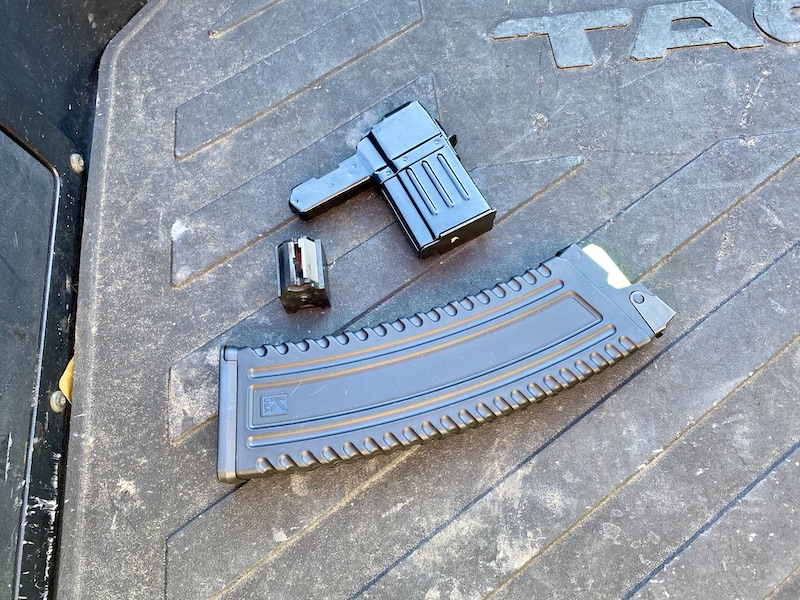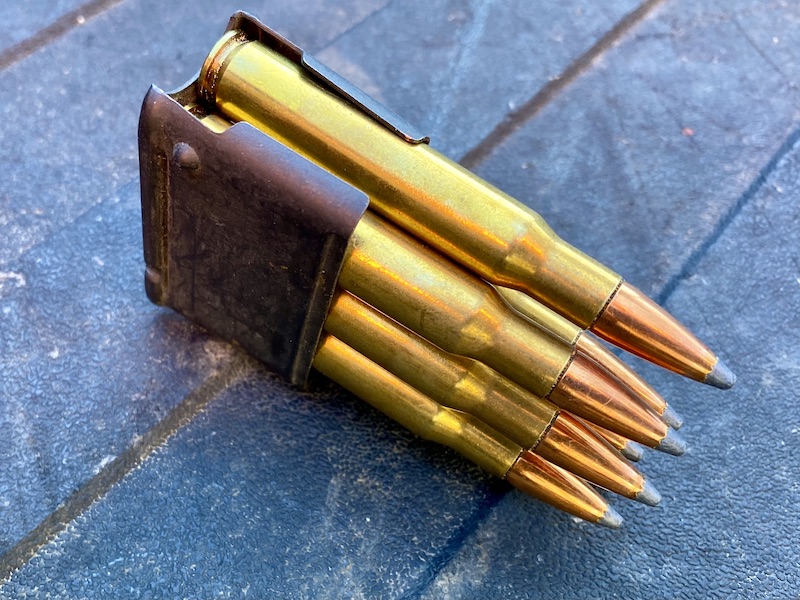If you’ve spent much time hanging around the hardcore gun geeks, you’ll know about the clip vs. magazine debate. If you want to sound like you’re part of the club, you don’t use phrases like “assault style weapon” and you certainly don’t want to make mention of your clip, unless you’re holding a Garand.
Clip has become a bad word.
But why all the fuss?
I grew up in the American south. Clip, though erroneous when used as a descriptor for what we know to be a magazine, is still part of the common parlance there—especially for those of the lower socioeconomic tier and those whose mullets may not prevent SPF protection sufficient to hide the root causes of melanoma.

In addition to my redneck roots, I also work closely with LEOs, and I frequently hear the term clip being used interchangeably for magazine by police officers, too.
The hatred of the term, though, isn’t from anyone on our team. My gut tells me that the animosity people feel for the misused “clip” grew from how the term was (is) often misused by politicians who may have an agenda. Any misuse of common terminology by someone who is purporting to be an expert may mark them as a stooge, and—by extension—make that word a sign of such chicanery.
Let’s dig into some etymology.
What is a magazine?
The Oxford English Dictionary (OED) lists a noun form of magazine that is now almost forgotten by most Americans: A place where goods are laid up; a storehouse or repository for goods or merchandise; a warehouse, depot.
GunMag Warehouse, for example, stores magazines in its magazine outside of Dallas.
More common is the second definition: 2. Military (a) A building, room, or compartment (of a ship, etc.), for the storage of arms, ammunition, or other military provisions. (b) spec. A store for large quantities of explosives.
There are, of course, multiple definitions of the noun form of the word, and the ones that apply more aptly are as follows:
†a. An air-chamber in a wind-gun; (also) a chamber for a supply of bullets in a ‘magazine wind-gun’. Obsolete.
This definition was in common usage from 1677-1744
b. A container or (detachable) receptacle in a repeating rifle, machine-gun, etc., containing a supply of cartridges which are fed automatically to the breech.
Seems familiar enough, no? This example was in use during the 19th century and came into its own with the development of repeating rifles, like the Henry, which used tubular magazines below the barrel.
†d. A case in which a supply of cartridges is carried. Obsolete. rare.
This one doesn’t require that much explanation, either. It isn’t one I’ve come across in anything I’ve done in this industry, which doesn’t mean it isn’t lingering still—just that it is, at the very least, rare.
What is a Clip?
The OED is less specific with the term clip:
That which clips or clasps; an instrument or device which clasps or grips objects tightly and so holds them fast.

This noun form of the word dates back to 1560, at least. It would certainly apply to the en bloc (“en bloc,” “enbloc,” even “en-bloc”—all of which mean “in block” when translated) clip of a Garand.
The en bloc is an advanced tool, in my mind. It holds rounds, inserts into the gun with its rounds intact, and ejects from the gun automatically when the gun runs dry. I don’t know of any magazines that will do that.
It is easy to see how someone could confuse an en bloc and a magazine.

These definitions may be even more fuzzy when you add stripper clips into the mix. A stripper clip is a clip that’s used (most frequently) to load a magazine.
Now we have magazines, clips that load magazines, and clips that function like magazines.
And there are clips that hold revolver rounds for speed loads, clips that hold magazines together, and even clips that hold holsters to your belt.
So why so much eye-rolling?
So much eye-rolling.
There are some things on which I am a legitimate, certified expert. The English language is one of them. I hold a Doctorate in English. I can’t say for certain that I’m the only gun writer with multiple advanced degrees in English, but I’m the only one I know of.

And there’s one thing I know for certain. Language evolves. Meanings change dramatically, sometimes by idiomatic usage, other times by generational appropriation, other times by simple vocal inflection due to sarcasm—and multiple other ways.
English is a colonial language, too. Native speakers of English often take for granted how well English picks up words from other languages and (almost) seamlessly works them into the lexicon.
In other words, language is messy.
That doesn’t change the fact that firearms are constantly under political threat. That’s not news. Those of us who support Second Amendment freedoms often band together. As tribal as we can be, we have common goals.
As it is with any such group, language becomes an identifier. There’s a code, of sorts. And it is constantly evolving. Take the words we use to describe the general class of firearms that includes the AR-15.
Clip and magazine fall into this code. If someone you don’t know correctly identifies an en bloc as a clip, you instantly know they’re in the club. At some level, they’re one of us.
Likewise, if you see someone talking publicly about high-capacity clips… Well, you know where they stand.
But still—Stop Beating Up Your Allies
If you hear the term ‘clip’ being used erroneously, consider who is saying it and why. Only the most pedantic will get into pissing matches over some of the grammatical or syntactical tropes that make them feel superior. These are the “you’re/your” folks.
Here’s a fact you may not like. Grammar, syntax, and spelling exist solely to prevent confusion. If you’re not confused by what you perceive to be an error, then it stands to reason that it isn’t actually an error.

And with that, we return to the argument at hand: Clip vs. Magazine.
You’re on the range, and your friend in the next bay asks if you have his Glock clip. Do you understand what he means? Is there any ambiguity?
One could get all elitist and enjoy a moment of superiority by feigning ignorance. But you know what he is asking for—and it isn’t a lesson in lexicography. Hand over the dude’s mag.


